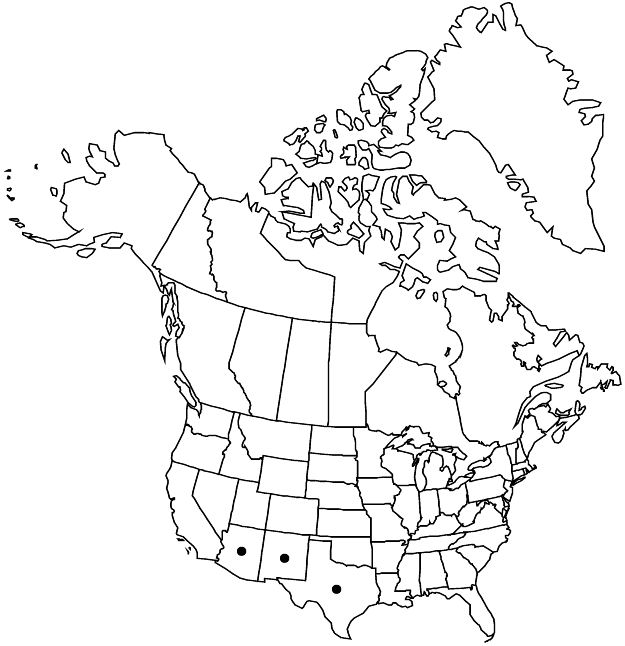Prunus serotina var. rufula
Brittonia 7: 307. 1951.
Twigs glabrous or hairy, hairs rusty brown or gray. Leaves: petiole (2–) 4–10 (–15) mm, glabrous or sparsely to densely hairy, sometimes glandular at petiole-blade junction; blade usually elliptic or oblong, rarely ovate or obovate, 2–5.2 (–7.4 on long-shoots) × 1.1–2.6 (–3.8) cm, leathery, apex usually acute, rarely abruptly acute, abaxial surface usually densely hairy along midribs proximally, sometimes glabrous. Inflorescences: rachises (25–) 35–70 (–102) mm.
Phenology: Flowering Mar–May; fruiting Jul–Aug.
Habitat: Along streams, moist slopes in canyons, mixed oak-pine-juniper woodlands
Elevation: 1400–2500 m
Distribution

Ariz., N.Mex., Tex., Mexico (Baja California), Mexico (Chihuahua), Mexico (Coahuila), Mexico (Durango), Mexico (Guanajuato), Mexico (Guerrero), Mexico (Jalisco), Mexico (San Luis Potosí), Mexico (Sonora)
Discussion
Black cherries of the semiarid southwestern mountains and canyons (var. rufula) have generally smaller, thicker leaf blades on shorter petioles than those of the eastern United States and southeastern Canada. The southwestern plants vary in the degree of indument (hairs often rusty, sometimes lighter on the branchlets and axes of the racemes, and on petioles and along midribs abaxially). The glabrous plants have been segregated by some botanists as var. virens; the variation in indument is nearly continuous, and the plants are otherwise similar to hairy specimens.
Selected References
None.